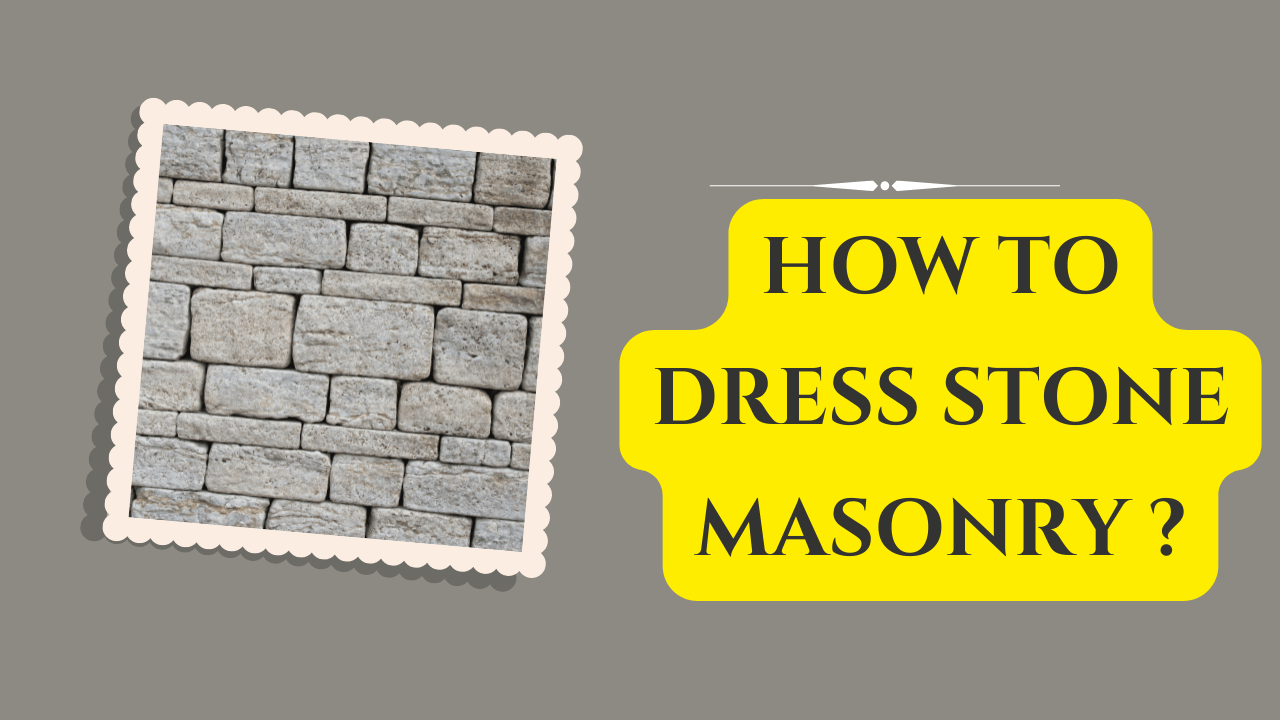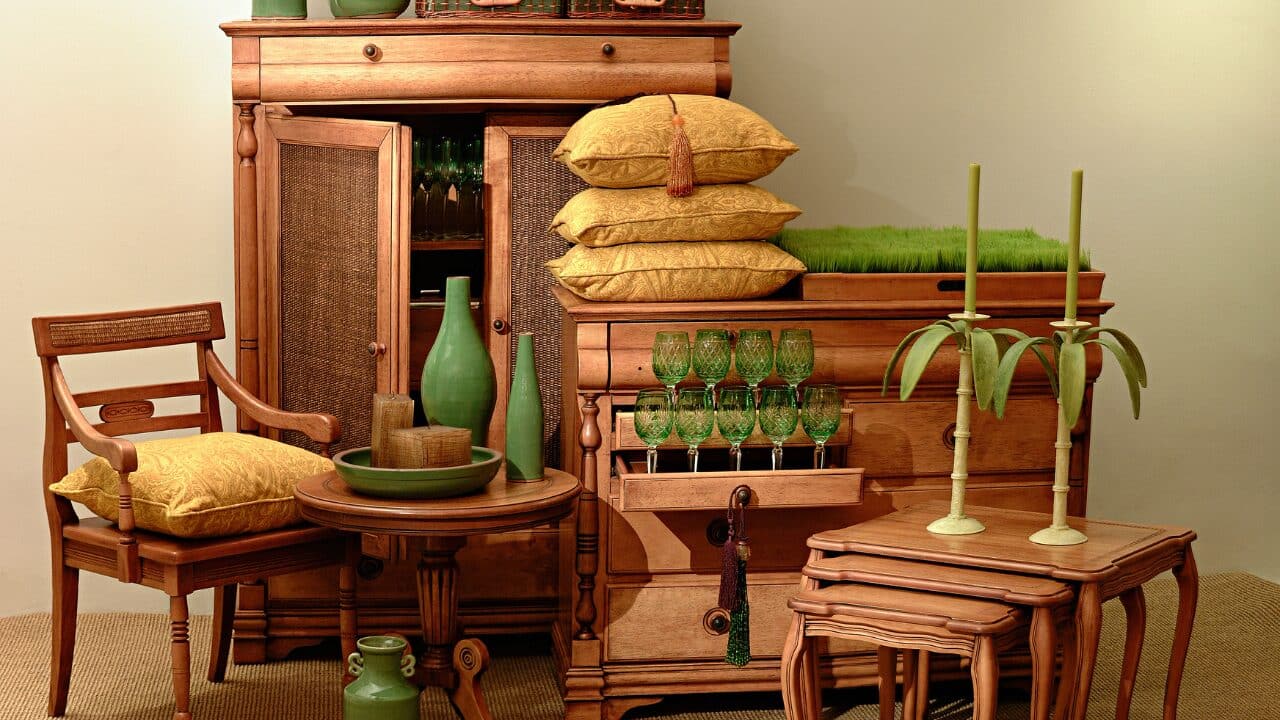Stone dressing is the process of shaping and sizing quarried stone into the desired form and size. This may be necessary since quarry stones do not always have the exact proportions or finish that is required.
Stone dressing necessitates a high level of technical ability and a thorough knowledge of materials, design drawings, and specifications. Dressing stones minimizes the amount of material that needs to be transported, lowering expenses.
Depending on the desired finish, stone dressing can be done with various equipment.
Rough finishes can be created with quarry hammers and chisels, whereas rubbed or polished finishes can be achieved by rubbing or grinding a cut stone surface by hand or machine. This article explains how to prepare natural building stones to achieve various finishes.
Table of Contents
Stone Dressing: An Overview
The process of giving the rough broken stones taken from the quarry a correct size, shape, and finish is known as stone dressing. Hand tools such as a shovel, chisels, other hand tools, and machinery are used to do this. This procedure can be carried out manually or mechanically.
A dressed stone is suitable for usage in a certain architectural setting. The quarried stones are exceedingly rough and uneven in shape and heavy in size and weight.
Reduce the size of large stone blocks to be lifted easily. Because it saves much money on transportation, this size reduction is usually made at the quarry itself. Stones can be utilized in various ways in construction, including foundations, walls, arches, and flooring; however, each setting will necessitate a specific shape.
Basic Types Of Stone Masonry Dressing
Stone dressing can be done both manually and mechanically. Expert stone-smiths can perform wonders on the right type of stone with chisels, hammers, and abrasives. Machines can cut the stone to any required size and shape mechanically.
Machine polishing can be used to make their surfaces even smoother. There are, nevertheless, several classic stone dressing methods that are still being used today. They are briefly detailed below.
1) A Hammer-Dressed Stone
It’s a sort of stone dressing in which big elevated parts of the stone are chipped off, and the stone is shaped flat yet rough due to hammer markings. A hammered-dressed stone has no sharp or uneven corners and a rather level surface that allows it to fit nicely in masonry.
The bed and vertical sides of these stone blocks are squared, and the face is dressed 8 to 10 cm away. This is done for the stone’s joints to function properly. Using a Waller’s hammer, this work is completed. Hammer-faced, quarry-faced, or rustic-faced stones are the types of stones obtained.
2) Rock Facing Dressed
The four edges of the rock-facing prepared stone must have a minimum of 25 mm broad fine chisel marks, all of which must be on the same plane. These dressed stones are used as quoin stones in brick or rubble masonry corners and in the plinth to provide the appearance of strength and solidity in constructions.
Using the flat face of a scabbling hammer, knock off all of the stone’s sharp and uneven corners. With a drafting chisel and a hammer, knock off the extra stone along one edge until it corresponds with a straight edge along its whole length. The chisel draught is what it’s called.
3) Punched Dressing
In this type of stone dressing, a chisel-shaped hollow semi-circle is used to sink around 1 cm vertical or horizontal grooves. The rock is chamfered or buried on both sides. It’s applied to rough-tooled stones. A sequence of parallel ridges is produced on the stone surface using chisels. Furrowed finishing is another name for it.
4) Boasted Finish
It’s a popular style of stone dressing in which parallel patterns run in any direction across the stone’s surface. This is accomplished with the use of a boaster, which is a wide-edged chisel. These marks can be vertical, horizontal, or angled in any direction. The chisel markings on the stone do not go the length of it.
5) Letter Imprinting Through Sand Blasting
This procedure of stone dressing is used to imprint text and designs on the granite’s surface. A liquid rubber-like substance is applied to the polished surface, solidifying as it cools.
The desired design is sliced into the coating with a sharp tool, exposing the stone surface to be carved. The exposed area is then chopped to the required depth using compressed air and a blast of sand.
6) Rough-Tooled Stone
When fairly consistent plane faces are required for masonry construction, rough-tooled stones are employed. A rough tooled surface must have a sequence of wide bands running across the surface, more or less parallel to tool marks.
Square and genuine edges and corners must be achieved. On the surface of the dressed stone, there could be depressions.
The Process Of Dressing Stone Masonry
Following the completion of the stone’s dressing to the proper level and shape, it is finished using two procedures:
Coarse Dragging
The dressed stone is worked further by dragging the coarse drag back and forth until the tool marks are gone. Depending on the necessary level of evenness, this may be followed by a second and fine drag.
Stone Polishing
Stones should be polished using a suitable abrasive and, if necessary, water. Stones can also be polished by firmly holding them on the top of a spinning table fed with an abrasive material such as sand or carborundum.
The final polishing will be done with a rubber or felt, with a polishing medium of oxide of lime known in the trade as putty powder.
Conclusion
That’s all you need to know about stone masonry and its different types. You can make a better stone selection after reading this article carefully. Hopefully, you’ll enjoy adding masonry stones to your kitchen and bathroom.





